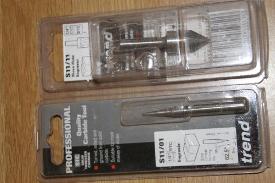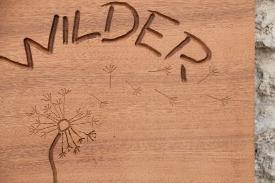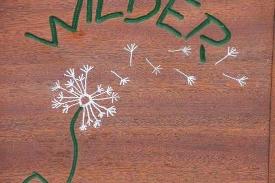A Sign for A Community Garden.
Wilder Bonsall is an organisation based in our village promoting environmental concerns, reducing the use of pesticides and generally trying to raise awareness of environmental issues.
I have been asked to produce a sign for a small garden belonging to the group but their design involving a dandelion flower head which would be difficult to produce as a carved item.
After discussion with members of the group an alternative design using the same lettering with an image of a dandelion clock was agreed.
As the sign would be located outside in a fairly exposed position I decided to use mahogany as the base material, the letters to be cut with a router using specialised engraving cutters, then painted as per the groups original design with the dandelion clock highlighted using metal powder and superglue.
It was important to consider the direction of the wood grain. If running top to bottom the end grain would be exposed on the top which could lead to accelerated deterioration of the piece, so I ran the grain horizontally and fabricated drip rails top and bottom to try and keep weather off the face of the board.
Other woodworkers.
I am involved with a facebook group: 'woodwork UK'. Many posts ask group members for advice on a wide range of subjects. A recent thread was in relation to freehand lettering with a router.
This seemed an ideal opportunity to join the discussion and explain which cutters I use when lettering and how I sometimes use metal powder in my designs.
The design was drawn out directly on to the board, the lettering and dandelion stem cut with a 3 blade cutter, then the dandelion clock was cut using a needle engraver.
The whole design was sanded, then the metal element added by forcing a paste of super glue and fine aluminium powder into the cut design, the excess powder sanded off and the lettering painted.
After drying for a couple of days the drip rails and edges were glued and screwed using stainless steel screws. The whole board was oiled using a mixture of teak oil and turpentine oil and after drying., finished with a coating of wax.
Get in Touch
Call 07710 888611, or email mrhwoodwork@outlook.com.


